Media | Articles
“Spitting Death,” a rare 1960s military vehicle, is ready to patrol your ’hood
Money burning a hole in your pocket? May I present to you Spitting Death, a Vietnam-era 1966 XM734 (MICV) born from the more common M113 (APC), currently listed for sale in Metro Atlanta for a hefty $85,000. Here’s why it’s so valuable.
APCs, or armored personnel carriers, have been around since WWI, when the British created the Mark IX, the first specialized APC of its kind, designed to pod troops and protect them from small arms threats while on the move. Although Germany’s surrender came before the Mark IX got a chance to show its stuff in combat, the design inspired a trove of future innovation. Although APCs eventually became colloquially known as “battle taxis,” make no mistake about it, these mil-spec machines are a far cry from the civilian Parisian taxis that inauspiciously sent 3000 Zouave to the front to save Paris in the First Battle of the Marne.
During WWII, an emphasis on purpose-built APCs entered production from a host of nations, including America’s famous and enthusiast friendly M3 half-track. The heavily produced and full-tracked M113 didn’t arrive on the scene until later in the early ’60s, around the meridian of Cold War animosity.
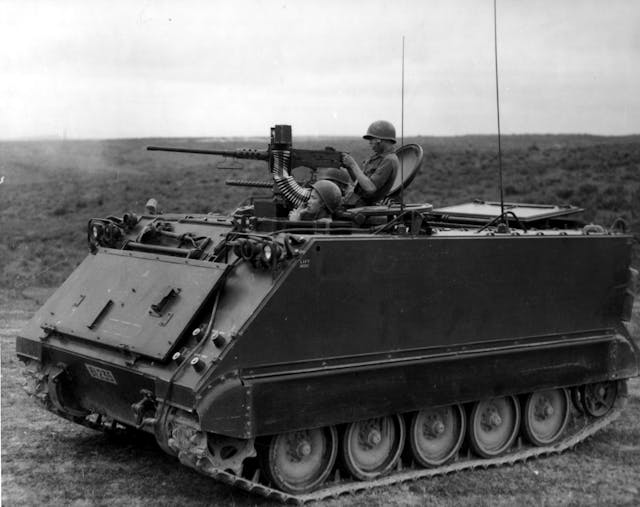
FMC Corporation (Food Machinery Chemical Corporation) was responsible for the lightweight aluminum-bodied M113. On the surface, it may seem like an off-the-wall relationship, however, considering that the publicly traded manufacturer was actually awarded its first military contract in 1941 for developing amphibious tracked landing vehicles. The progression into making the M113 APC was more natural than one might suppose.
Like the practice of outfitting gun trucks, many of the first M113s that were shipped to supply South Vietnamese friendlies were soon getting fabricated with quasi-armor and weaponry of their own. These modifications allowed for a level of contact (both incoming and outgoing) that bent the rules on M113’s original intended use as a battle taxi. In short order, the U.S. Army began to develop standardized alternatives through channels like protocol and research. Along came armored cavalry assault vehicle (ACAV) kits for the M113, replete with a turret, gun mounts, and belly armor. In plain talk, it was like a level-up kit for kicking ass and allowed for a transport vehicle to be pushed to its limits.
Marketplace
Buy and sell classics with confidence
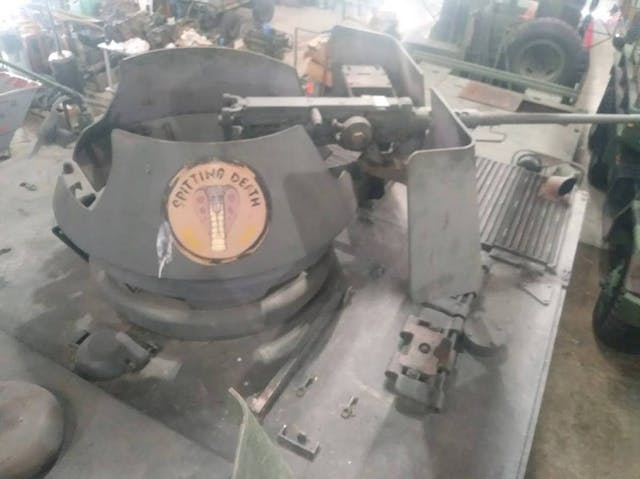
In the vein of weaponizing the M113, the U.S. Army looked to optimize what it could effectively do. This spawned a new R&D project in ’65 (coded MICV-65), which pursued a Mechanized Infantry Combat Vehicle (MICV) as a long-term avenue for the U.S. to have in its arsenal.
Two competitors came to the table, FMC and PACCAR Inc. FMC submitted the XM734 and PACCAR the XM701. The verdict? PACCAR’s XM701 got the nod, although neither vehicle bore fruit in mainstream production. Both oddballs were short-lived, to be outpaced by superior infantry fighting vehicles (IFVs) like the M2 Bradley.
So where does that put this 1966 XM734? In pretty rare company, that’s where. A listing on uhrig suggests the machine is serial number 5 in XM series. While it’s unclear precisely how many XM734s were produced, the website russian-tanks.com suggests that FMC got the order for only six units total.
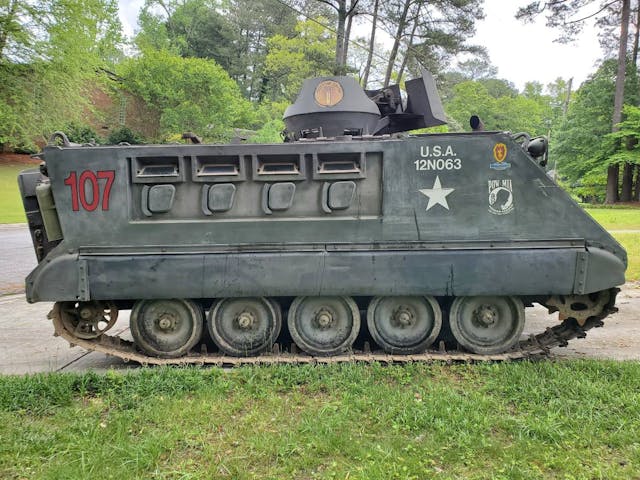
A couple of key alterations mark the main differences between an XM734 and an M113. FMC re-designed the interior such that the personnel on the inside could sit on benches back-to-back and face out through concave vision blocks and periscopes. This gave them the ability to target the enemy and fire upon them from six gun ports—four on each side and two in the rear.
This particular XM734 runs and drives, powered by the original Chrysler 361 V-8 that FMC fondly planted in its initial M113s. Funny enough, the M113 actually received an upgraded diesel engine in 1964 and thereafter, changing into the M113A1. Would outfitting a new diesel in the XM734 prototype have made any difference in the eyes of the U.S. Army? Probably not. This 361 seems to rumble along just fine, anyway.
According to the listing, this XM734 has seen field experience during operations in the iron triangle and, even more impressively, Operation Cedar Falls. It was a hammer and anvil offensive, also the biggest ground operation of the Vietnam War. However, what prevails as dubious is the fact that it is highly unlikely that a prototype such as this deployed overseas. The POW and infantry logos are merely commemorative, but they’re logically appropriate, considering the 25th was an authentic infantry division operating out of the Cu Chi district by April 1966, right across from the triangle itself and well before the operation commenced on January 8 the following year. Also of note, the sale includes import paperwork, which could provide more answers beyond small clues like the info placard with an overhauled date of July ’67 at an armed forces base in Böblingen, Germany.
Nevertheless, whatever doubt exists does little to subtract from the importance of vehicles such as these. The Spitting Death viper logos are an artist’s rendition, painted on the XM734 by a veteran who apparently manned a vehicle that donned the moniker. And although this XM734 likely never saw the worst of war as many other named machines did, that doesn’t mean it’s not a fine piece of military history.
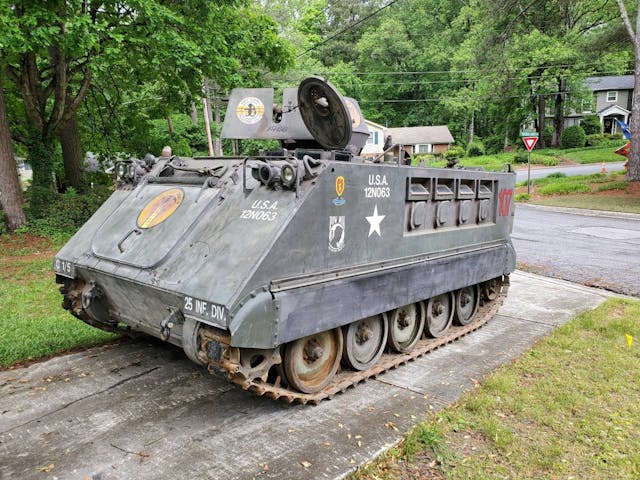








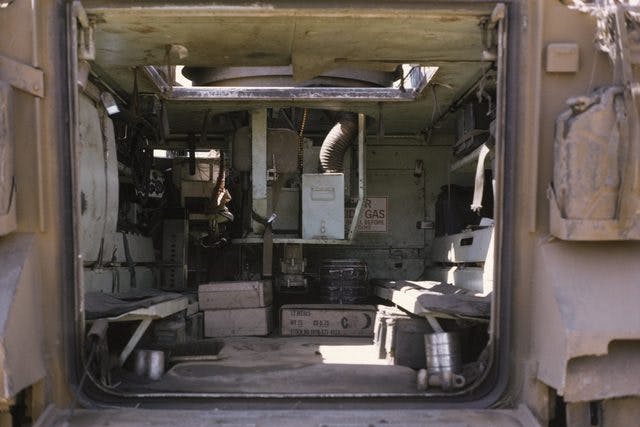
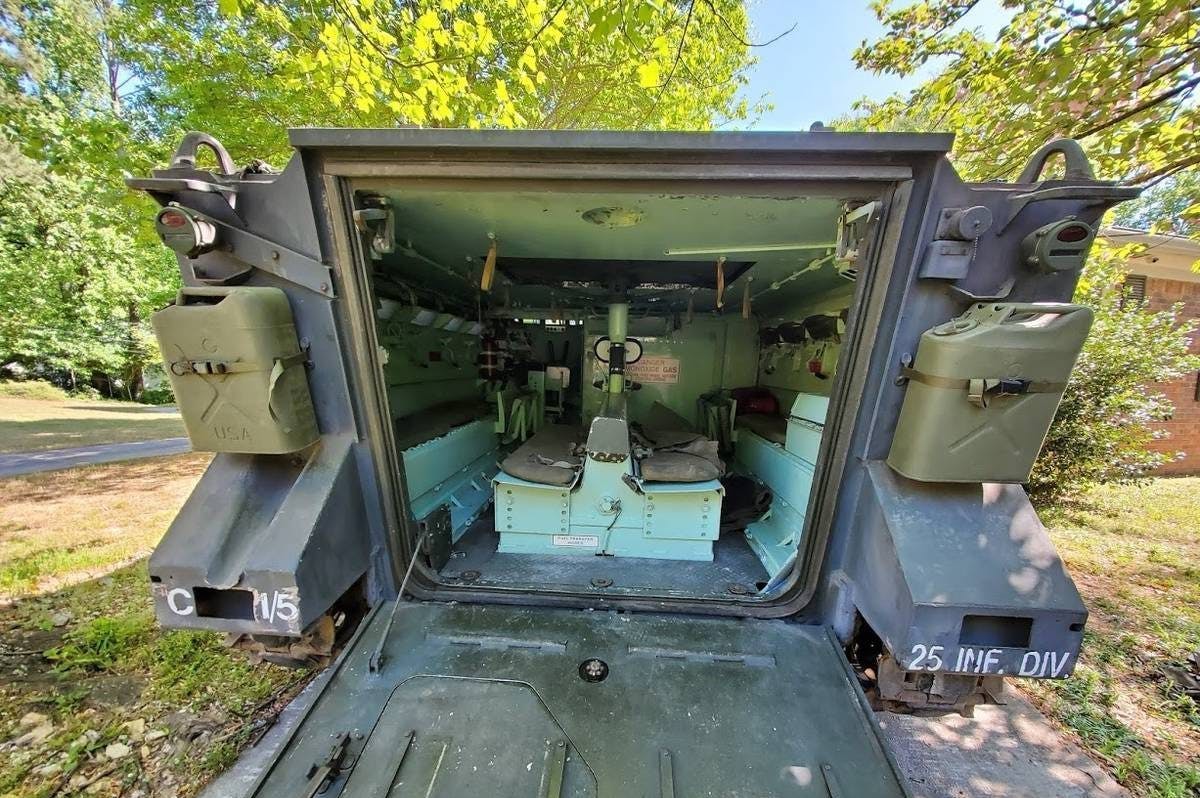



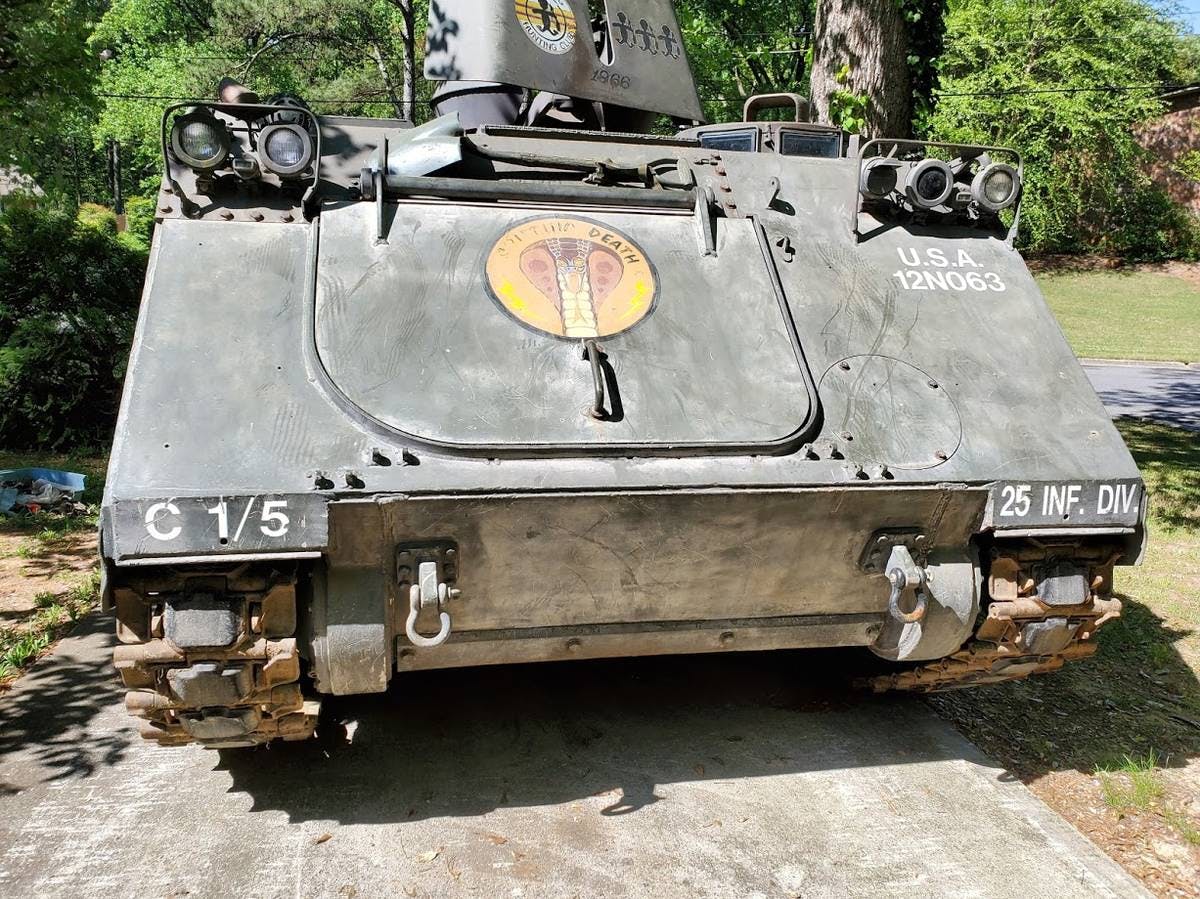
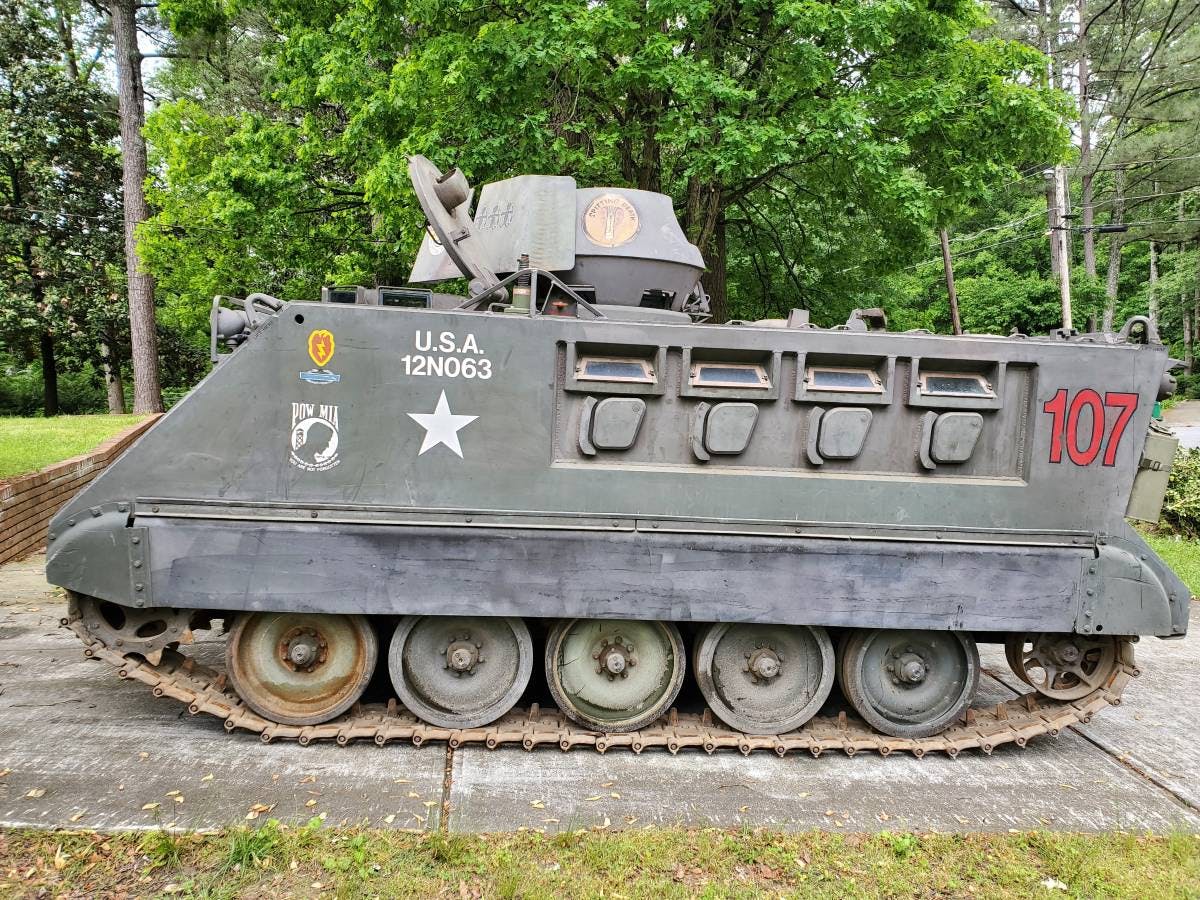
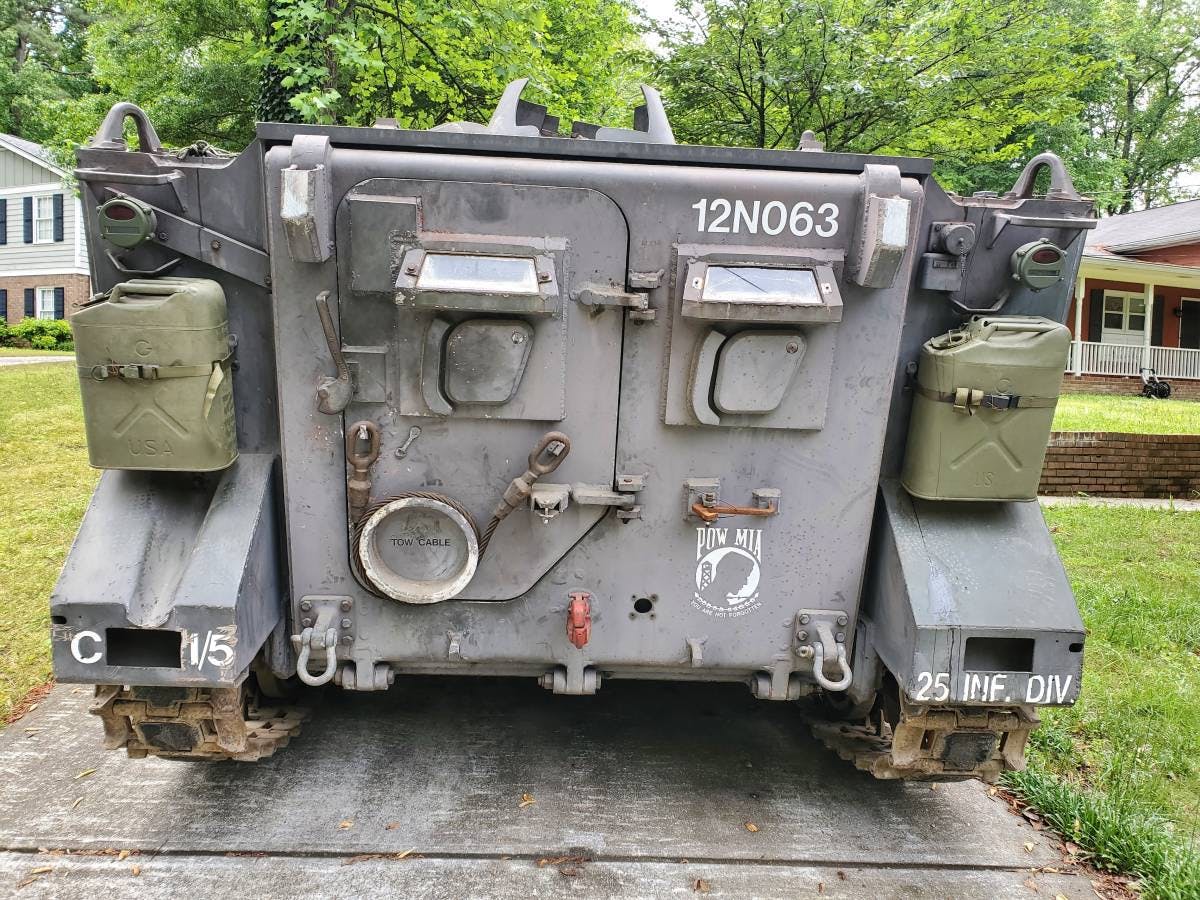
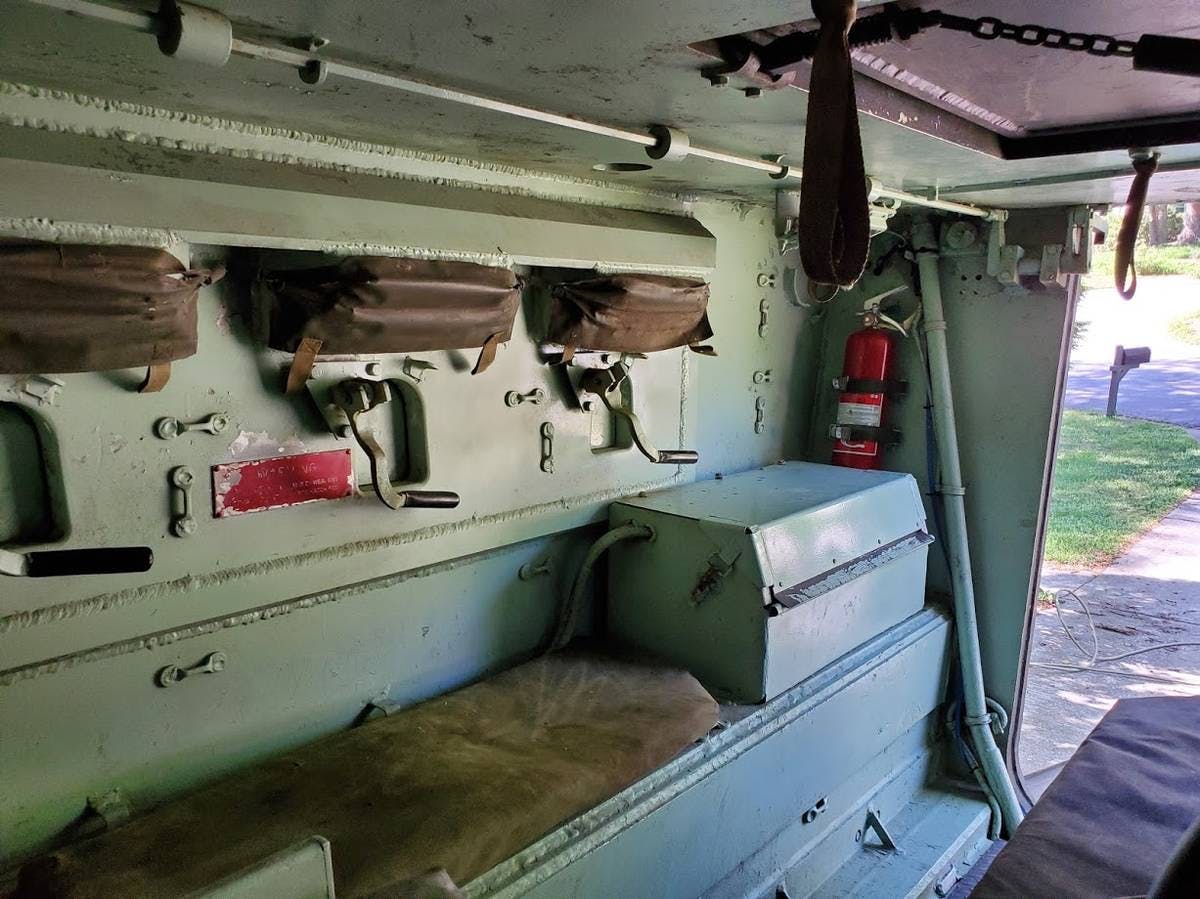
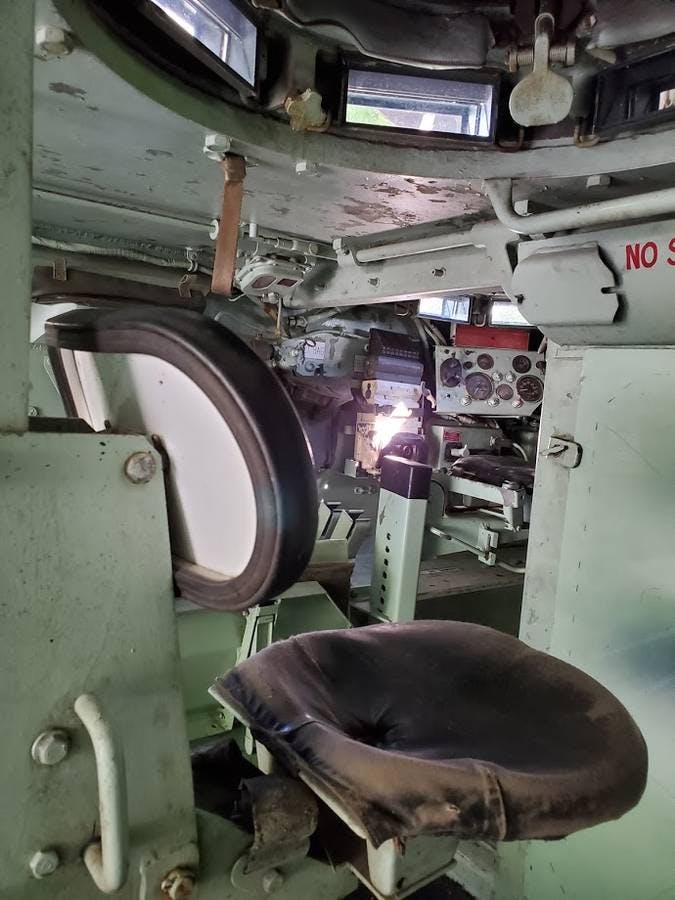
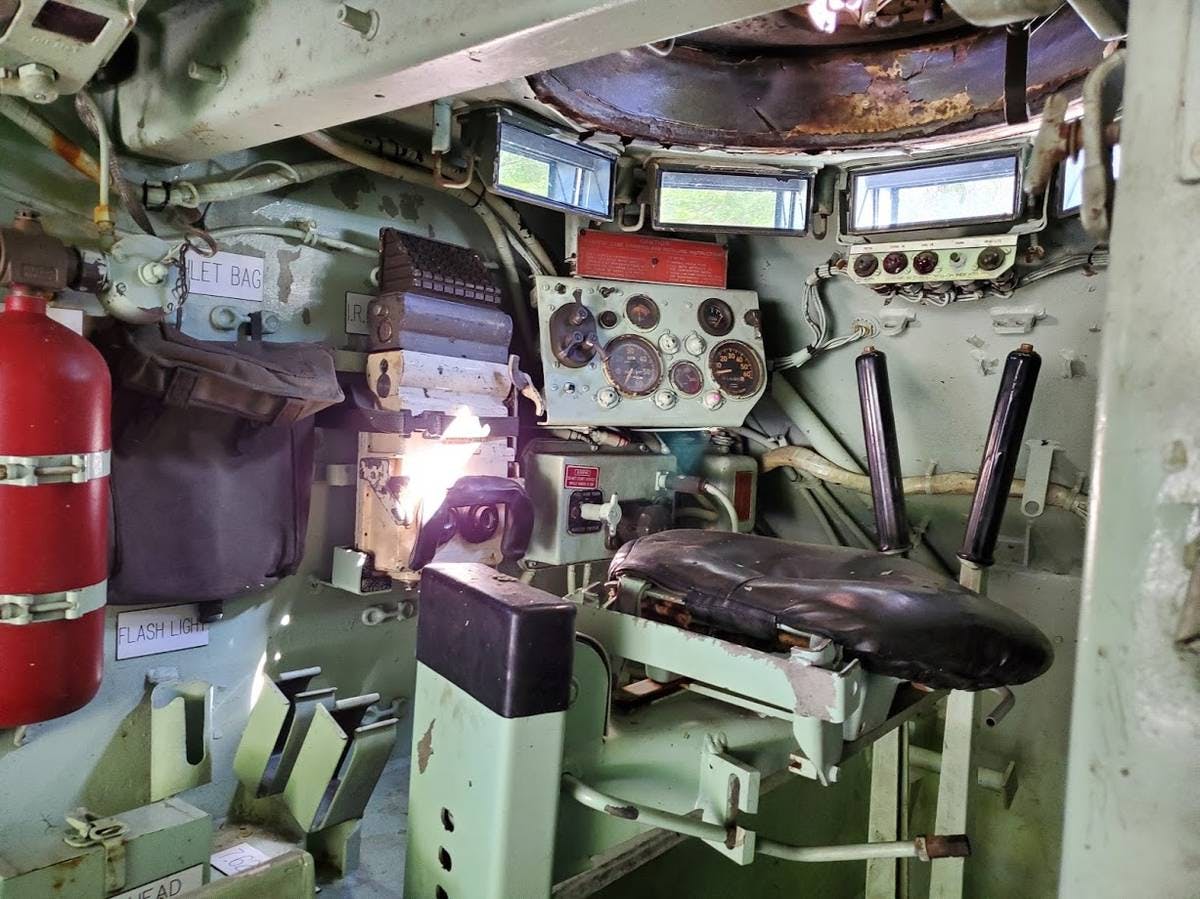
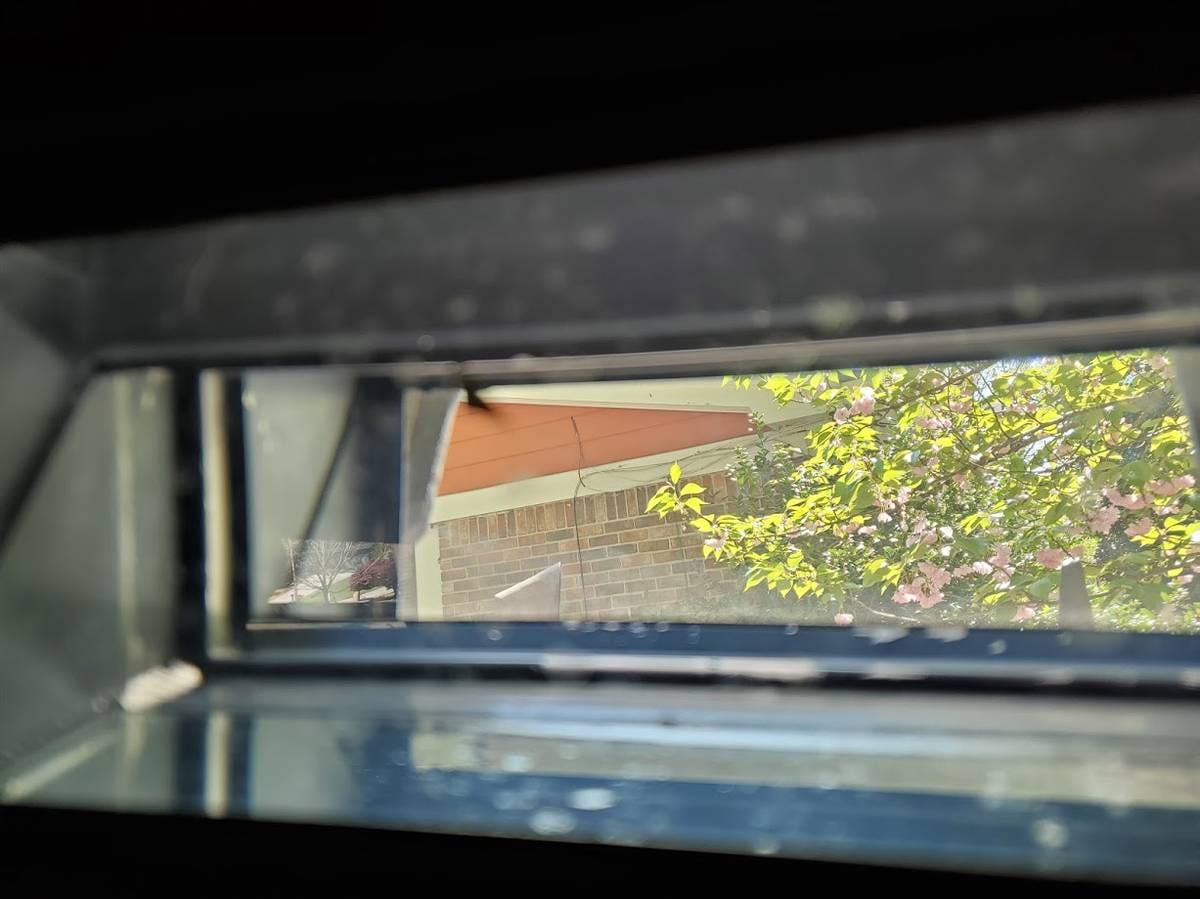
















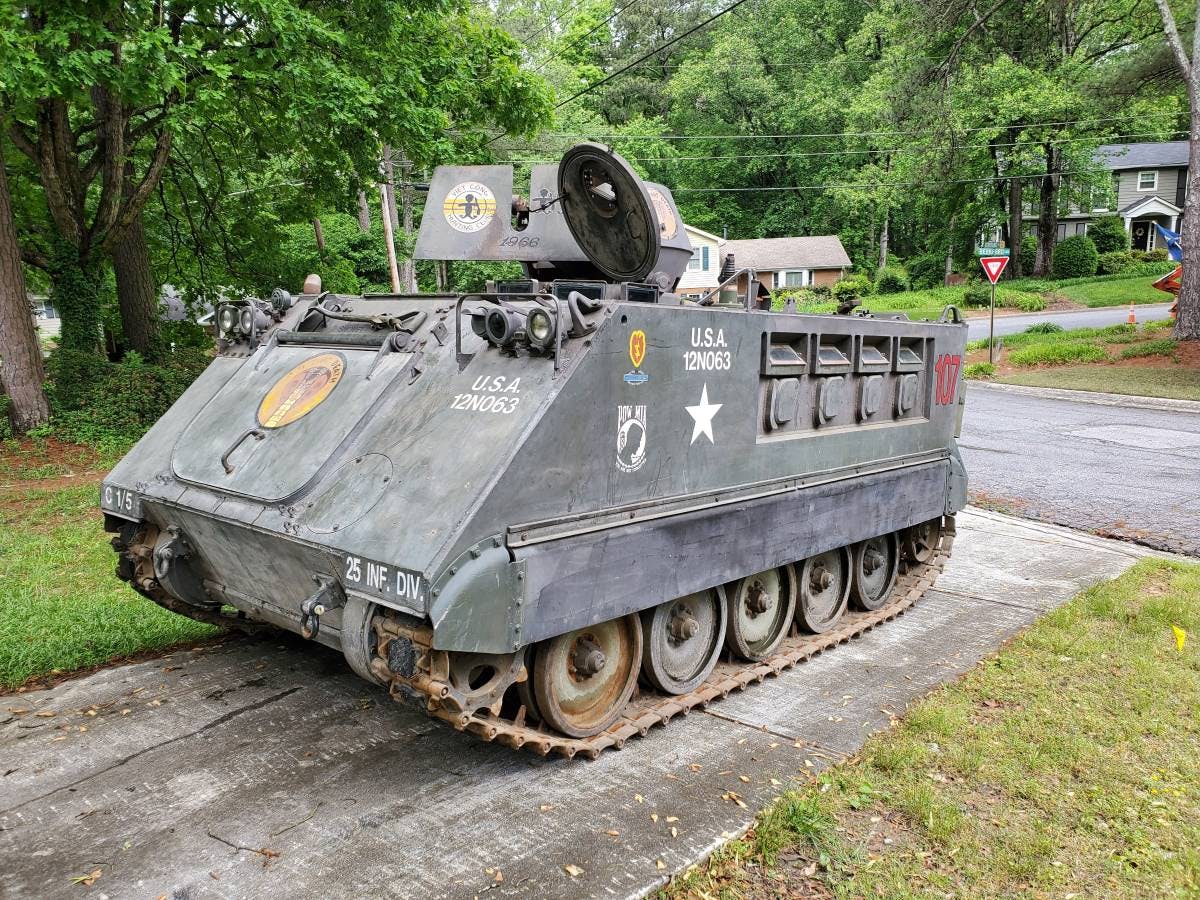
Is this M113 still fore sale?